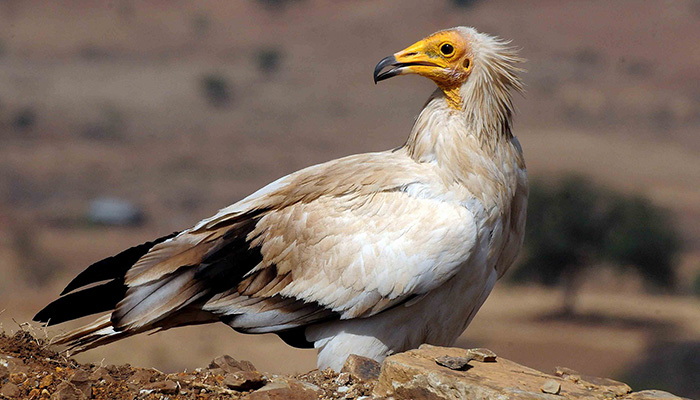
English: Egyptian Vulture,
Indian Vulture, Scavenger Vulture
Russian: Стервятник, Обыкновенный стервятник
German: Schmutzgeier
French: Vautour
percnoptere
Mongolian: Дэлт ёлон, Дэлт бүргэд
Japanese: エジプトハゲワシ (Ejiputo-hagewashi)
Body Length: 55-65 cm
Wing span: 155 -170 cm
Habitat: Rare summer visitor mainly to mountains in Mediterranean
area, more common only in Spain/NW Africa and Turkey; winters in Africa. Declining.
Food carrion, offal at refuse dumps, etc. Nests on cliffs.
Identification:
Medium-large. Flight silhouette characteristic, with wedge-shaped tail
(slightly shorter than width of wing) and small head with narrow, long bill;
wings comparatively broad and well ‘fingered’. Had on silhouette fairly flat
when soaring; more arched when gliding, with primaries lowered. Flight with
rather slow and deep wingbeats. Peculiar white centres of flight-feathers on
upperparts unique. Adult: Body, head, tail, lesser and median wing-coverts
white; head, neck, breast and mantle with a varying degree of yellowish or
grey-brown tinge. Strong contrast on underside between white parts and black
flight-feathers. Yellow cere and bare skin on head show up at some distance.
- Juvenile:
Dark brown, with strongly contrasting ochrous-buff (bleaching to whitish) broad
tips to tail-feathers, upperwing-coverts and feathers of mantle, rump,
scapulars and lower belly/vent. With wear, this plumage becomes more dull
brown, lacking in contrast. There is some variation, too: some juveniles have
less prominent light tips and look more uniform brown than others.
- Immature:
Plumage less distinctly patterned, more dull brown, with pale or whitish
feathers first appearing in 2nd summer on upper mantle, rump/lower back, belly
and wing-coverts. Adult pattern gradually acquired over c. 5 years.